Experience a world of endless wonder (and traitors)
In 2009, a fantastic show debuted on the SyFy network about a group of secret agents combing the world for historical artifacts that have been imbued with special powers because of their significance in history or the significance of their owner. Warehouse 13 chronicled the perils of this work as the agents brought these artifacts back to the titular location, a secret repository for housing these dangerous treasures. In the words of Senior Agent Artie Nielsen, they were to “snag it, bag it, tag it.”
Sadly, in 2014 Syfy cancelled Warehouse 13 after five seasons. Many fans were disappointed to see the series go, including my wife and myself. We have since watched it many times over and are currently making our way through the series again.

In 2017, a pair of small game publishers, Infinite Dreams Gaming and Conquest Gaming here in Nashville, TN, opened a Kickstarter to produce a board game based on Warehouse 13 with support from the cast of the show who still love what they created.
The game is finally out and we snagged a copy for bagging and tagging. So get your Tesla guns and Farnsworth communicators ready as we dig in and review Warehouse 13: The Board Game!
Fieldwork
A Warehouse 13 game is divided into a season/episode structure. One game is a season; each artifact mission is an episode. The mechanics of Warehouse 13 will feel familiar to anyone who has played Battlestar Galactica. To successfully complete episodes you must make progress on your investigations. But, you must perform maintenance to keep both the agents and the Warehouse from blowing their lids. Finally, there is a pesky traitor plotting everyone’s downfall. Too many failed episodes brings on the season finale, a big showdown against the traitor. Everyone must work together to win by either retrieving three artifacts successfully or defeating the Traitor in a one-vs-all scenario at the end.

In Warehouse 13, the core mechanic revolves around trait dice that represent the clues and leads around the artifact being investigated. Each agent must collect a lead or clue die that will be used in the retrieval phase once the artifact has been
discovered. The number of clues and leads needed varies from artifact to artifact depending on their difficulty. Dice arecollected by playing a trait card from your hand that matches that die. These trait cards also represent items and actions that can be played for other effects. Agents must balance the value of the cards’ abilities vs the need to retrieve dice. Agents can work on the case either in the Warehouse or the field. At the Warehouse you can do research and collect leads, but to get those important clues you must go to the field. But be careful: a Traitor in the field alone may be able to snatch the artifact for themselves!
The Goo Bucket
 In the series, Warehouse 13 had an internal system designed to keep artifacts neutralized and prevent interaction between the thousands of stored objects in it. That system revolves around a neutralizing purple goo.
In the series, Warehouse 13 had an internal system designed to keep artifacts neutralized and prevent interaction between the thousands of stored objects in it. That system revolves around a neutralizing purple goo.
In the game, if you are unable or choose not to retrieve a lead or clue you must put a die in The Neutralizer, depicted as a bucket of purple goo. That die is out of play for the rest of the episode. This is one of the ways that the Traitor can hinder the the team. Too few dice for retrieval and the artifact slips into the hands of James MacPherson (the villain of season one) and the Traitor.
Retrieval
Once all of the clues and leads have been collected retrieval can begin. The artifact is revealed and the number of dice needed to 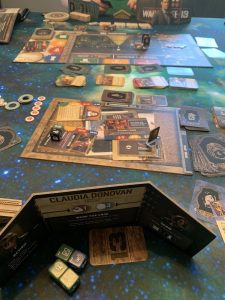 collect it is set. If you collected all of the leads before you collected all of the clues, the artifact may have a nasty side-effect dubbed a Whammy. This will affect the agents’ ability to retrieve the artifact.
collect it is set. If you collected all of the leads before you collected all of the clues, the artifact may have a nasty side-effect dubbed a Whammy. This will affect the agents’ ability to retrieve the artifact.
Agents roll the dice they have collected behind their character screens and secretly bid a die to be used for retrieval. Dice that don’t match the requirements are misapplied and may possibly be re-rolled later. Additionally, the adversary, either through a basic automa called Standard Warehouse Protocol or by the Traitor once they are revealed, rolls the purple goo die that can neutralize one of the bid dice if it matches.
Once all dice have been applied or misapplied, success or failure is determined and the next episode can begin.
The Traitor
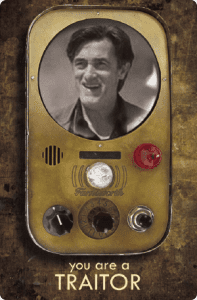
The show often dealt with traitors in the midst of the Warehouse. These traitors were usually caused by an encounter with an artifact (either accidentally or due to nefarious machinations). The board game replicates this by assigning one player to be the traitor at the beginning of the Season. They must stealthily work against the other agents or risk imprisonment in The Bronze Sector. In the series, The Bronze Sector of the Warehouse contained people deemed too dangerous to the Warehouse or history in general. They were encased in bronze and stored along with the rest of the artifacts. Bronzing a Traitor limits their ability to affect the game. Bronzing a loyal agent gives the Traitor the chance to reveal their identity and take a more active role in the game.
If MacPherson and the Traitor are successful three times then the Season ends with a big Season Finale where the agents must overcome an outright assault on the Warehouse and the Agents. It will take everything the agents have left to be victorious in the end!
A Bit of History
With any licensed game reviewers often have two questions when approaching it for the first time. Is the game faithful to licensed property? Can people who haven’t seen that property still play and enjoy the game? With Warehouse 13, I think a third question exists. Does this game successfully carry on the legacy of the games before it?
To the first question, I answer with a resounding yes! People who knew and loved the show clearly worked hard on it. Little 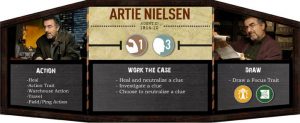 nuances in the gameplay will make fans of the show smile. My favorite character on the show is Artie and all of his in-game actions represent him perfectly. I love that Claudia can’t go into the field by herself because she’s a junior agent, and my wife and I literally laughed out loud on our first play through when we learned that Myka can’t gain Intuition cards and that Pete was nothing but Intuition.
nuances in the gameplay will make fans of the show smile. My favorite character on the show is Artie and all of his in-game actions represent him perfectly. I love that Claudia can’t go into the field by herself because she’s a junior agent, and my wife and I literally laughed out loud on our first play through when we learned that Myka can’t gain Intuition cards and that Pete was nothing but Intuition.
The second question is still a yes, though maybe not quite as emphatic. I think it helps to know the source material but it’s not a requirement. Anything referencing a certain item or aspect of the show is accompanied by a mechanic that translates the feel of that thing into how it is played. There is also a fully co-op version of the game for people who don’t like traitor mechanics, making the game even more accessible.
For the third question, I will turn this review over to Meeple Mountain’s resident Battlestar Galactica (BSG) expert, Marcus Cathey:
“It feels like Warehouse 13 is more streamlined with its structure. In BSG, you’re never quite sure of when a traitor will reveal and the turns can be a little weird. In Warehouse 13, it is very structured: adversary, 3 steps of agent turns, repeat. Do that until you’ve lost three artifacts or won three. Warehouse 13 limits the overall time frame better than BSG. The best part may be that while both games can feel slanted against the “good guys,” Warehouse 13 adds a finale to give a struggling agent team one more chance of overcoming bad luck and a tricky traitor.”
Protocol
The one big criticism I have with the game is the clarity of the rules. In both the 2-player co-op game I played with my wife and the 4-person traitor game I played with a group of friends we found ourselves languishing over the rulebook. The book itself is not terribly thick which in general is a good thing, but that leads to a lack of clear steps and definite rulings where certain cards in the game are vague. In one case, it literally led to us having to post a question on Board Game Geek to get a ruling from a designer (who did respond quickly!). This led to our games taking double the amount of time advertised on the box. Now that I have played through it a couple of times I am sure that my next game will be closer to the expected time. Just be aware that you may have a similar experience on your first go.
I also would have preferred the trait cards be regular playing card size, but that’s a minor preference on my part. It doesn’t take away from the game.
Final Report
I love this game! It excellently captures a show with a special place in my family’s heart. A large deck of artifacts and field locations keeps the variety fresh. Combine that with variant rules like co-op or increased difficulty and the game stays replayable and on my shelf.
I would like to see an updated rules document released that restructures things for clarity and includes errata. More importantly, I want to see expansions! I’m looking at you H.G. Wells!
If you are a fan of Warehouse 13, all-vs-traitor games, or even quirky co-op games then go snag a copy of Warehouse 13: The Board Game for yourself!
Warehouse 13: The Board Game is available at your local game store or online at Amazon and other board game vendors.


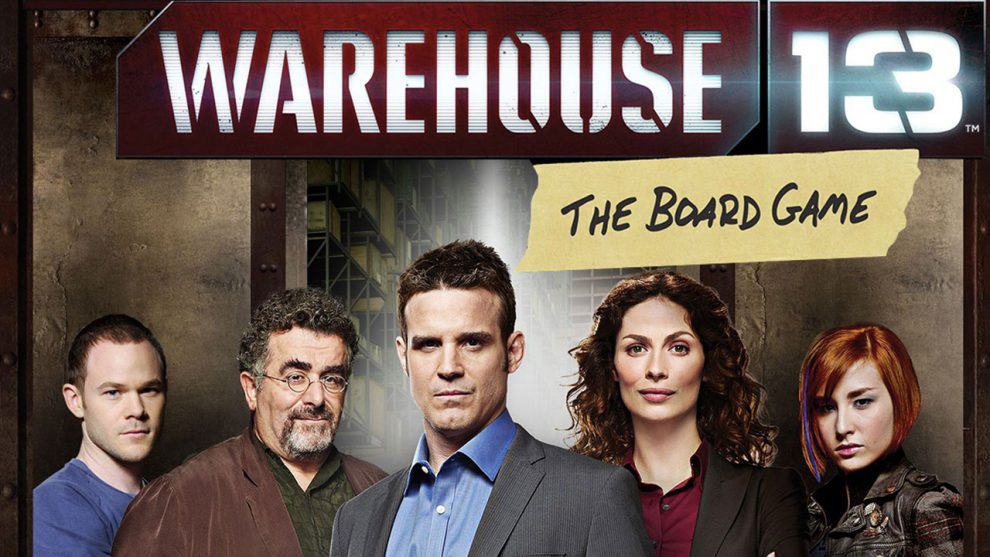

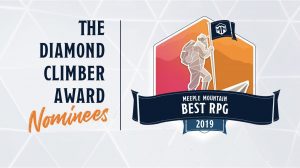
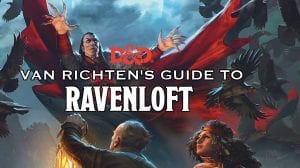
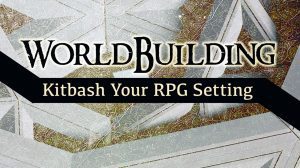




Add Comment